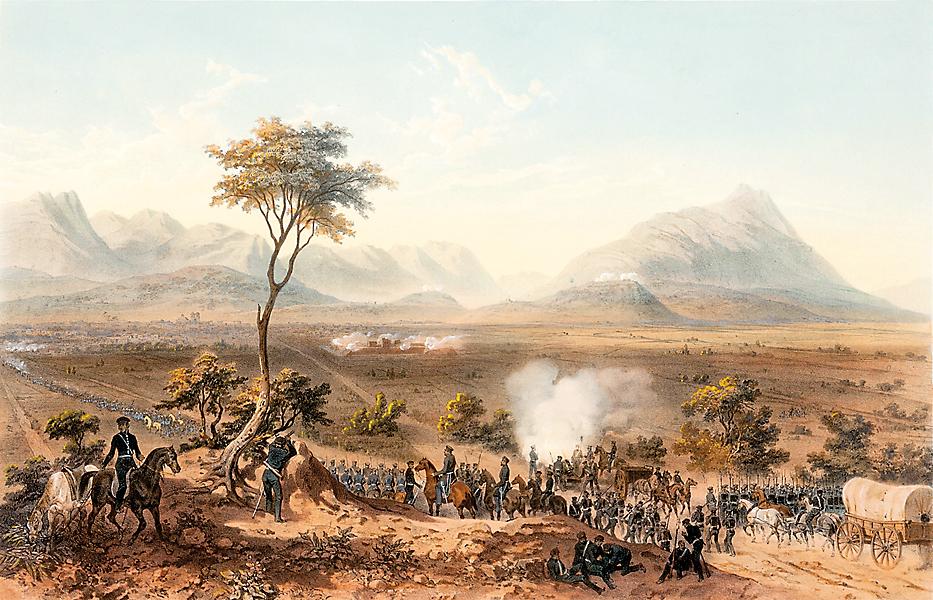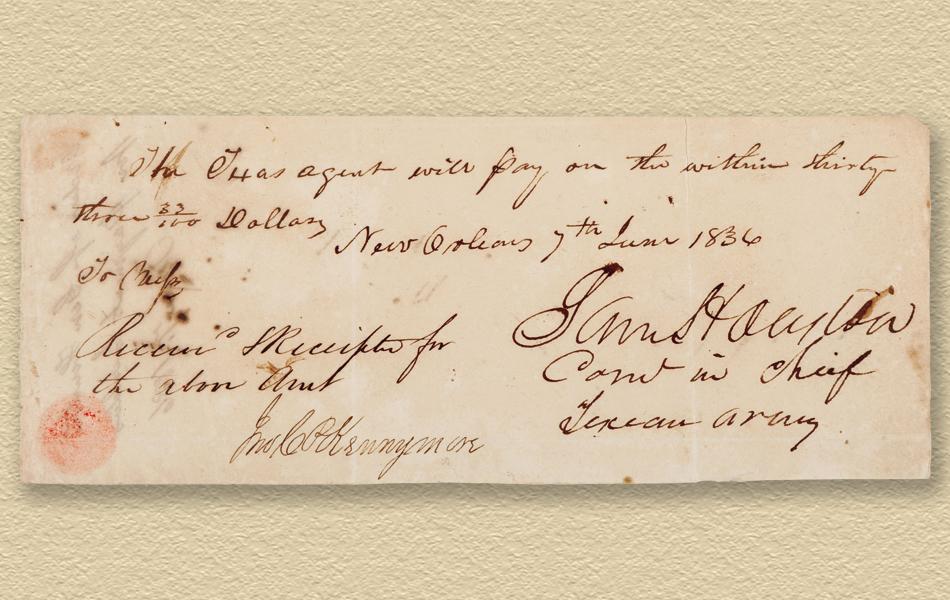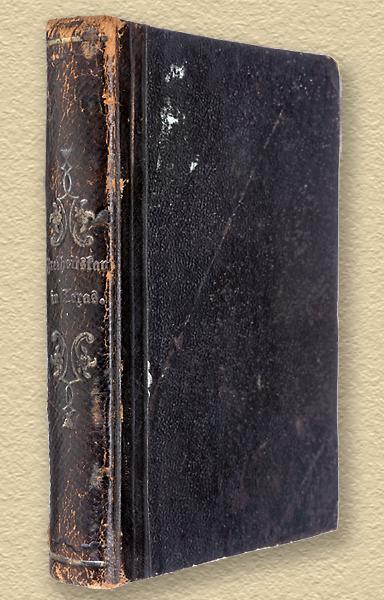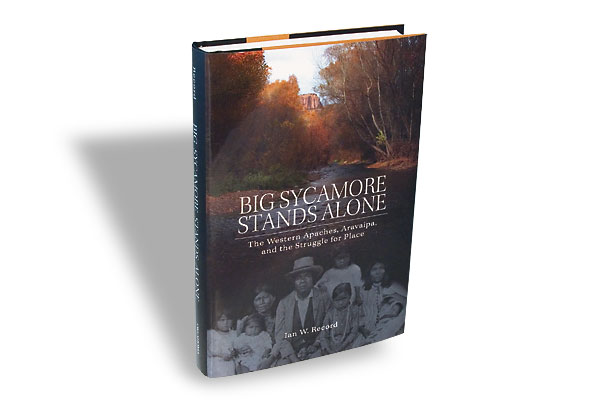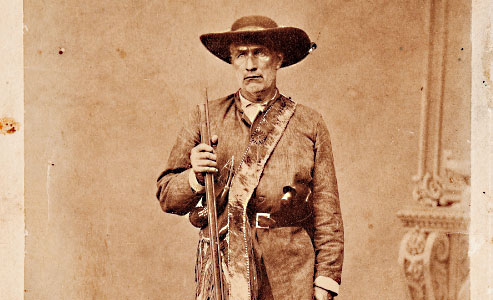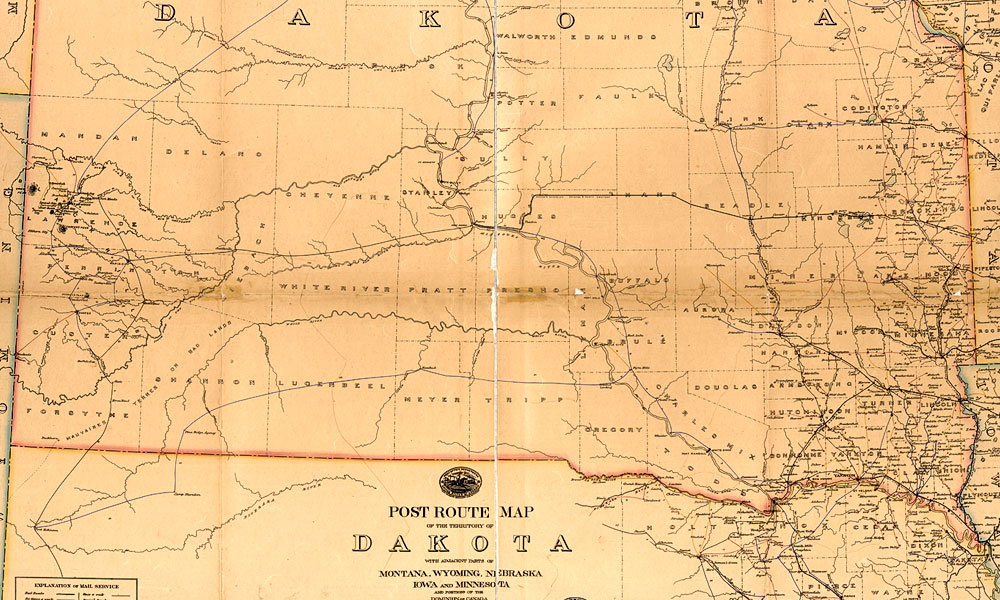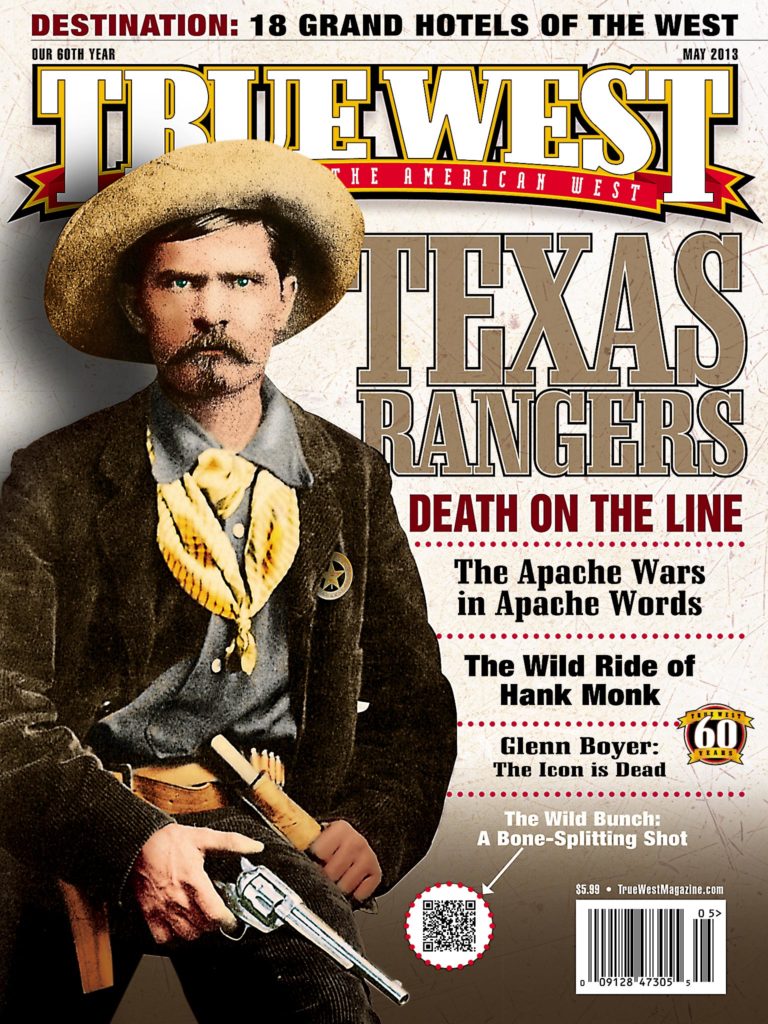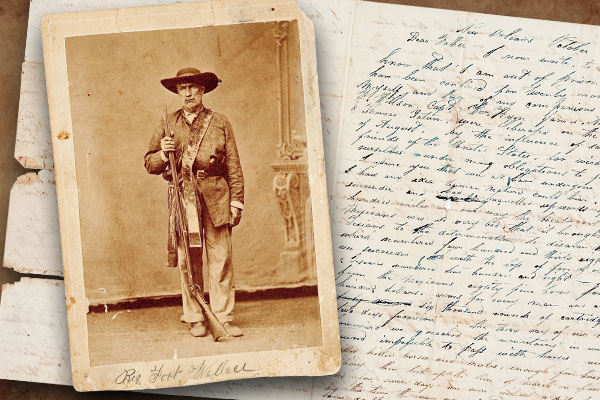 At the age of 19, William A.A. Wallace lit out for Texas to avenge the deaths of his brother and cousin who had been killed while fighting for Texas independence from Mexico at the 1836 battle in Goliad.
At the age of 19, William A.A. Wallace lit out for Texas to avenge the deaths of his brother and cousin who had been killed while fighting for Texas independence from Mexico at the 1836 battle in Goliad.
Two men who had survived that massacre, Hermann von Ehrenberg and John C.P. Kennymore, have ties to artifacts that collectors successfully bid on at Heritage Auction’s Texana sale this past March 1-2. Included among those were two notable Wallace lots.
The most striking of the pair, an 1872 albumen photo of Wallace, has a note on the back, possibly written by photographer Michael Miley, that states the hunting pouch Wallace is wearing was “taken from the Indian Chief ‘Big Foot’ from whoom [sic] he derived his name.” Wallace got that nickname after his 1840 move to Austin, when the six-foot-two-tall, moccasin-wearing frontiersman was mistaken for the chief.
By 1844, Wallace was a changed man, ever more determined to fight the Mexicans. He found himself in New Orleans, Louisiana, writing to his father back home in Lexington, Virginia. A few weeks prior, he had been released from Perote Prison in Veracruz, Mexico.
His letter details his 20-month captivity that began after he and other San Antonio volunteers under Gen. Alexander Somervell had failed to occupy the Mexican town of Mier on Christmas Day in 1842. He shares the events after their surrender, including the men’s unsuccessful escape in February 1843 and the resulting punishment, death by execution for 17 in their group of 176, determined by a “black bean” lottery; those who drew the black beans were killed, with Capt. Ewen Cameron executed as well.
Released from Perote on August 25, 1844, he and four other white bean survivors walked 125 miles to the city of Veracruz; “I came here without a hat, shoes, or shirt, my companions the same situation,” he writes, “the citizens of New Orleans gave us clothing and money to pay our way until wee [sic] can get a passage for Texas.”
Undeterred after having “undergone more than I had any idea human nature could bear,” Wallace tells his father, “…my bad treatment while in Mexico compells [sic] me to return, for i am determined to fight the Mexicans so long as i live in Texas.”
After Perote, Wallace joined the Texas Rangers under John Coffee “Jack” Hays. He fought under Hays until the 1846 outbreak of the Mexican-American War, where he served as a first lieutenant. In 1850, after his discharge, he drove a mail hack some 600 miles from San Antonio to El Paso. When the Civil War erupted, he was still guarding the frontier against Comanches. He spent the latter years of his life in Frio County, dying a few months shy of 82, in 1899.
Texana artifacts at Heritage earned collectors nearly $240,000.
Photo Gallery
All images courtesy Heritage Auction
At Heritage’s October 2010 Texana auction, a collector successfully bid on a circa 1845 plan of the Perote Prison where Bigfoot Wallace and nearly 200 Texans were held captive after the Mier Expedition. Wallace was released early on August 25, 1844, while the last of the prisoners were released on September 16. One of the chilling aspects of the map is a cross marked as “Where the Bones of Texians Prisoners are Exposed;” $1,700.



